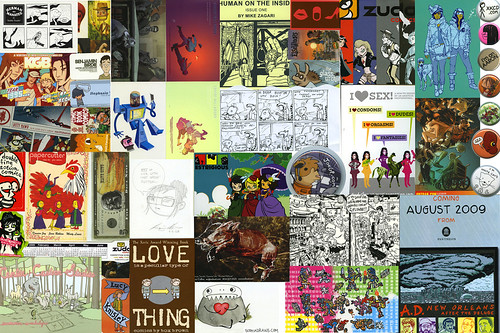
I just don't have it in me to write a giant photo post like I did for the Saturday MoCCA experience. This is perhaps appropriate, because Sunday was pretty laid back. It was much less crowded than Saturday's packed house, so I had a much more chill experience of checking out the booths and chatting with artists. You can check out the photos I took throughout the weekend at Gnerd's Flickr.
The collage you see above is made up of all the free postcards and buttons I got over the Festival weekend (also a few business cards with neat graphics). You can set it as your desktop, and it will be liking going to MoCCA every time you look at your computer! Good luck ever finding your folders again!
Check back tomorrow for a very special Panel Discussion: MoCCA Edition, wherein I'll post scans from all the awesome small press stuff I got. You'll see what $10 a day at MoCCA gets you (spoiler alert: awesomeness).
1 comment:
It is told that in medieval England, full lace wigsthere was a tradition to pile small buns in front of the marriage couple. full lace wigsThe pile was stacked high enough so that the bride and groom could barely see one another. If the bride and groom managed to share a kiss over the stack, lace wigsit was supposed to symbolize a lifetime of prosperity. However, during the reign of King Charles II, a French chef paid a visit to London and he observed the cake piling ritual. The chef found this ritual inconvenient and he decided that he would use short lengths of broom sticks to separate the layers.wedding invitations The cakes had to be prepared in advance and due to the lack or refrigeration, they had to be frosted in lard to stop them from drying out. Before the wedding ceremony, the lard was scraped from the cake, however, cheap wedding dressesin later years to improve the taste of the lard, sugar was added and the lard was left on the cake as a form of decorative icing. These cakes must have resembled the more familiar wedding cakes which we are used to seeing today.
Post a Comment